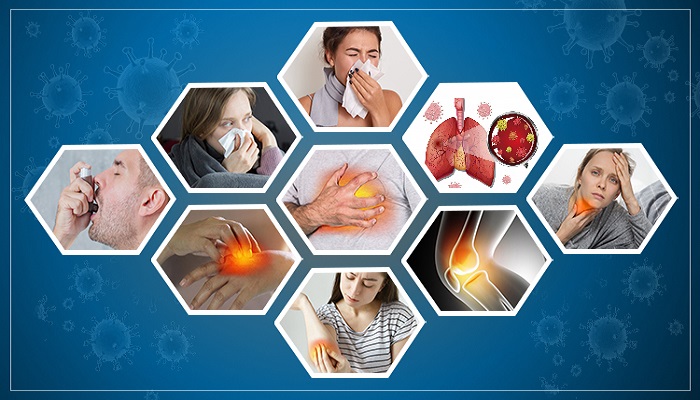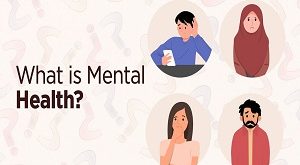Top 10 Most Common Health Issues
Health issues refer to any condition, disease, or disorder that negatively affects a person’s physical, mental, or social well-being. These issues can range from minor, temporary conditions like a common cold to serious, chronic illnesses such as heart disease, diabetes, or mental health disorders. Health issues are often influenced by a variety of factors, including genetics, lifestyle choices, environment, access to healthcare, and social determinants of health (like income, education, and housing quality).

Addressing health issues often requires both medical interventions and broader efforts to improve health equity, promote preventive care, and address underlying social factors that impact health.
- Physical Activity and Nutrition
- Overweight and Obesity
- Tobacco
- Substance Abuse
- HIV/AIDS
- Mental Health
- Injury and Violence
- Environmental Quality
- Immunization
- Access to Health Care
Physical Activity and Nutrition
Research suggests that maintaining physical activity can help prevent or delay the onset of several diseases, including certain cancers, heart disease, and diabetes, as well as improve mood and reduce depression. Although inactivity is common with advancing age, it isn’t inevitable. Local organizations like churches, senior centers, and shopping malls often offer walking and exercise programs. Just as exercise is important, so are healthy eating habits, which can decline when living and eating alone. Successful aging requires nutrient-rich foods and avoiding empty calories from sweets and candy.
Overweight and Obesity
Carrying excess weight increases the risk of dying from various conditions such as high blood pressure, type 2 diabetes, heart disease, stroke, gallbladder disease, osteoarthritis, sleep apnea, respiratory issues, high cholesterol, and even cancers like breast, prostate, and colon cancer. The National Heart, Lung, and Blood Institute provides comprehensive guides and advice on managing obesity.
Tobacco
Tobacco remains the leading preventable cause of illness and early death in the U.S. Now referred to as “tobacco dependence disease,” quitting is often more successful when smokers have support from their healthcare providers, as noted by the CDC.
Substance Abuse
Substance abuse includes both drugs and alcohol and affects seniors as well as younger people. Seniors may self-medicate with both legal and illegal substances, sometimes mixing medications with alcohol, leading to significant health risks. Due to stereotypes about seniors, medical professionals may overlook potential substance abuse in older adults.
HIV/AIDS
In the U.S., seniors over 50 account for 11–15% of AIDS cases. From 1991 to 1996, AIDS diagnoses in adults over 50 increased at over twice the rate seen in younger adults. Older adults are less likely to use condoms, and aging-related immune decline makes them more susceptible. Stereotypes about aging and sexual activity mean this issue is often under-recognized, resulting in limited representation in research, clinical trials, prevention, and intervention efforts for older adults.
Mental Health
Dementia is not a natural part of aging and can result from various factors such as medication reactions, infections, or chronic diseases. Depression is the most common mental health issue among older adults, and untreated depression can lead to suicide, especially among elderly white men, who have the highest suicide rate of any age group.
Injury and Violence
Falls are the top cause of injury and trauma-related hospital admissions among seniors, with one in three people over 65 falling each year. Exercises that enhance balance and strength, medication reviews, and home adjustments can help reduce injuries. Seniors also benefit from fire prevention tools at home and improved security to deter intrusions, as they are twice as likely to die in a home fire compared to the general population.
Environmental Quality
Low-income, racial, and ethnic minority populations are more likely to live in areas with environmental hazards, according to government studies. Many seniors live just above the poverty line, exposing them to heightened environmental risks.
Immunization
Flu and pneumonia are among the leading causes of death in older adults. While flu vaccination rates for seniors have improved, pneumonia remains a serious concern, especially for older women.
Access to Health Care
Many seniors don’t monitor their health as closely as they should. Although there is a national shortage of geriatricians, the University of Rochester Medical Center (URMC) has one of the largest teams of geriatric specialists, offering services across multiple hospitals, including the VA Hospital in Canandaigua, senior housing facilities, and community settings.
Chronic Diseases: Conditions like heart disease, diabetes, and hypertension are more prevalent in disadvantaged communities due to factors such as limited access to healthcare, lack of healthy food, and high levels of stress. These groups often face barriers to managing these conditions, increasing the risk of complications and mortality.
Mental Health Disorders: Anxiety, depression, and other mental health conditions are more common among people experiencing social and economic inequalities. Factors such as discrimination, financial stress, and lack of access to mental health services contribute to these disparities.
Maternal and Infant Health: Disparities in maternal care affect outcomes for both mothers and infants, especially among racial and ethnic minorities. High rates of preterm births, low birth weight, and infant mortality are often linked to unequal access to prenatal and postnatal care, as well as other social determinants of health.
Infectious Diseases: Access to vaccination, preventive care, and treatment for infectious diseases like HIV/AIDS, tuberculosis, and COVID-19 often varies by socioeconomic status and geographic location. Marginalized groups may face delays or lack of access to treatments, putting them at higher risk for complications.
Substance Use Disorders: Rates of substance use disorders are often higher in communities with fewer economic opportunities and greater stressors. Limited access to mental health services and support systems can make it difficult for individuals in these areas to get help for addiction and substance misuse.
Environmental Health Issues: Communities with lower socioeconomic status are often located in areas with more pollution, leading to issues like asthma, respiratory illnesses, and cancers. Poor air and water quality in these areas contribute to long-term health risks.
Preventable Injuries and Violence: Inequities can increase exposure to unsafe environments, where people are more at risk for violence, accidents, and injuries. These communities may lack adequate emergency response services, health facilities, and violence prevention programs.
Access to Healthcare Services: Many individuals in underserved communities face barriers to accessing basic healthcare services, including preventive care, mental health support, and emergency services. This lack of access often leads to delayed treatment, worsening of conditions, and increased healthcare costs.

